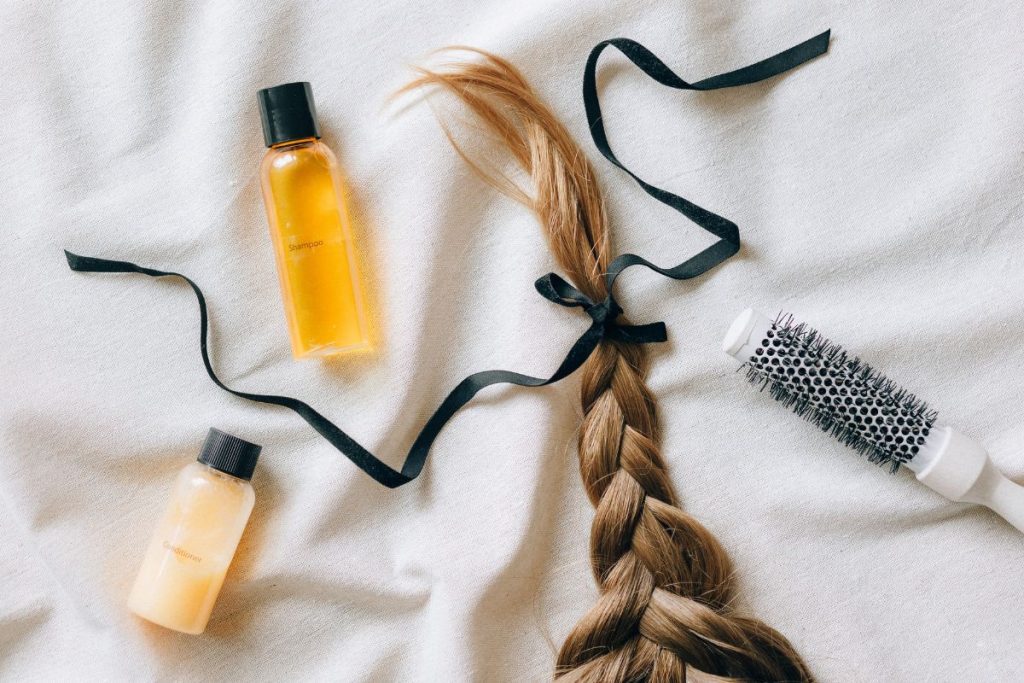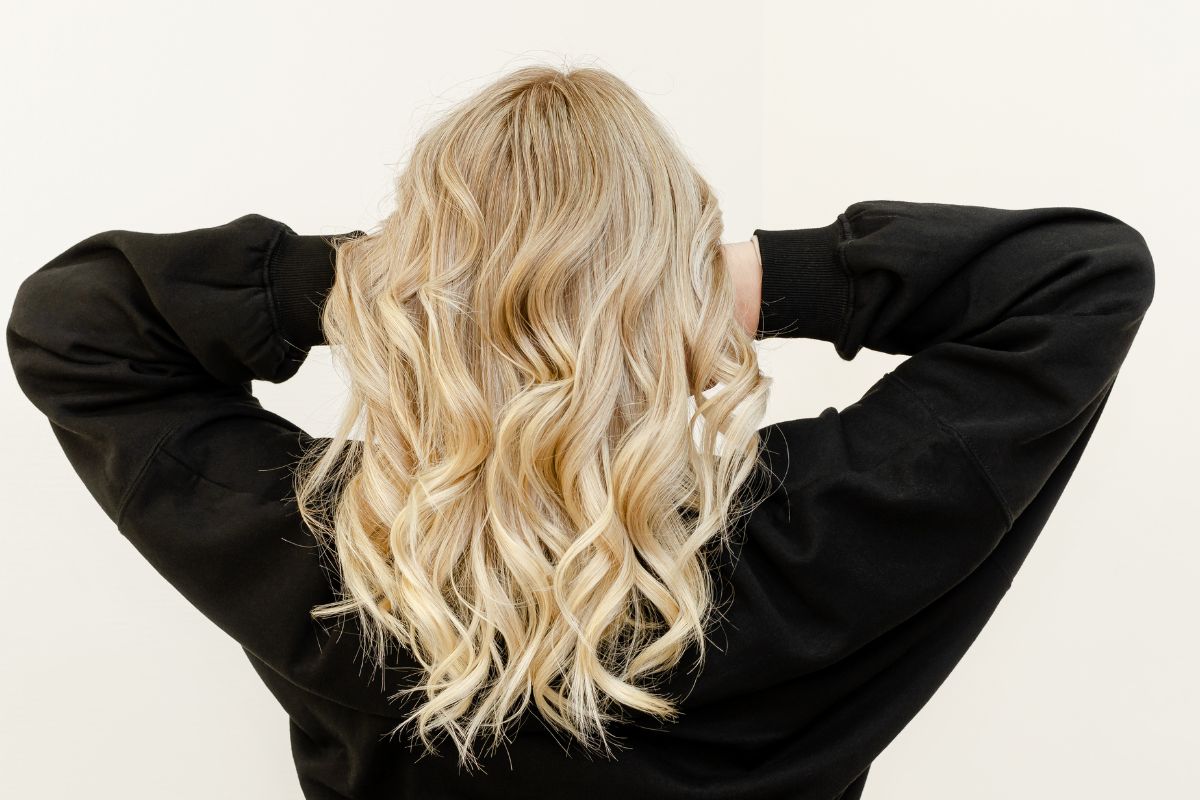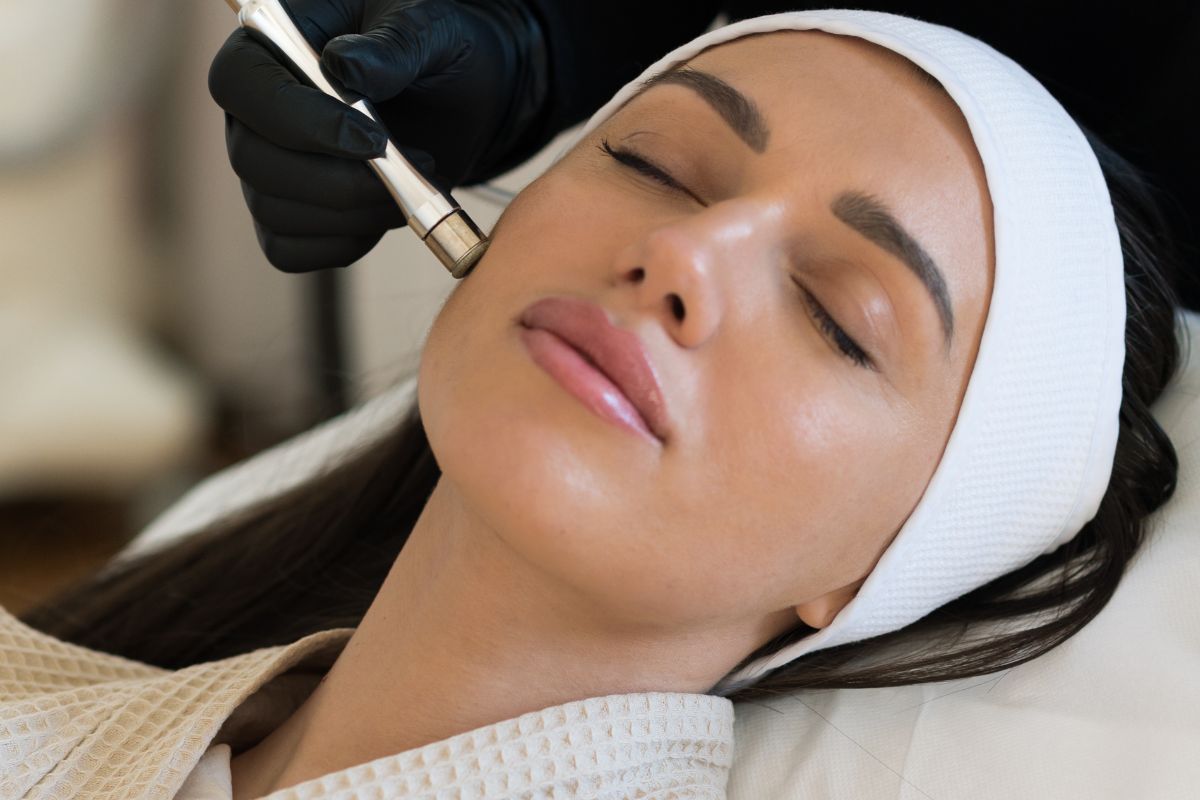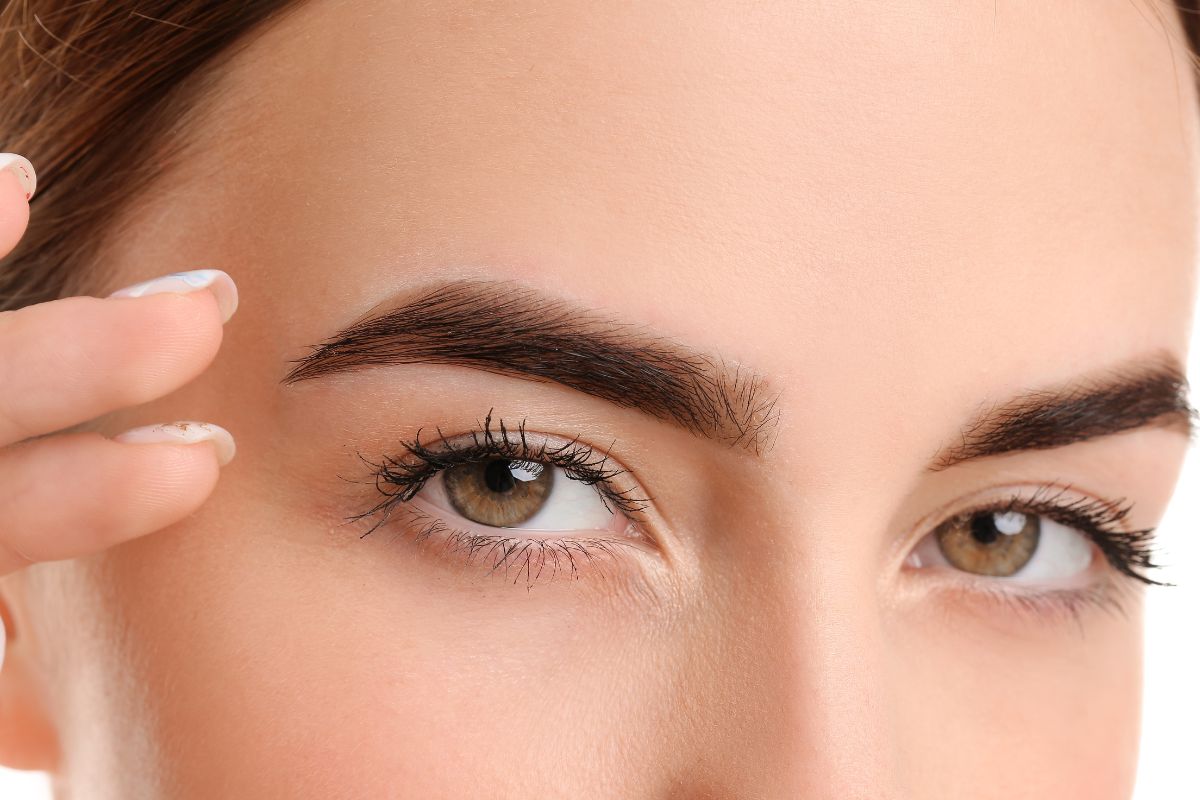The Ultimate Guide to Types of Braids: Elevate Your Hairstyle

Published Sept. 21, 2023
Braids are hairstyles made by blending sections of hair and crossing them over each other to yield a pattern. There are several kinds of braids. You can craft many braided hairdos from them, from a single braid cascading down your back to intricate updos. It all means to elevate your look, make you feel pretty, and highlight your face.
Brading is an art. It is worth mastering. It can always have your back when you’re looking to beautify yourself simply. All you’ve got to do is trust your hands, and you’re ready to take on your day in the prettiest way possible.
In this article, we’ll discuss the ultimate guide to the top types of braids everyone should know. These braids will come in handy for every kind of occasion. They will elevate your hairstyle and highlight your beauty. Let’s head on to the discussion.
Braids for Women: Braids Tips and Tricks
- It is effortless to braid wavy and curly hair. It is due to them having more grip and texture to hold the braid. It’s easier as compared to silky, straight hair.
- Adding a volumizing power will add grip to silky, straight hair. As a result, it will be effortless to braid.
- Employing a texture/micro crimping iron will also give grip to your tresses.
- One or two-day-old hair has a better grip than freshly washed hair.
- Dense braids may last two to three days on straight hair. It is assumed that it is set with hairspray. Also, it is protected with a silk scarf while sleeping.
- Always prep the hair properly before braiding. Detangle and ensure it is smooth. Use the tail of a tail comb for clean sectioning and parting.
- To tame flyaways and create a smoother finish, lightly spray hairstyle on a toothbrush. Use it to brush over the braided sections.
- Keep your fingers as close to the scalp as possible. It will maintain tension during the braiding process. It helps in creating tighter and more secure braids.
- Start with simple braiding styles. As time passes, try more intricate designs as you gain confidence.
Why You Should Do Braid Hairstyles?
1. Hair protection
Braiding your hair helps to protect it from external elements such as pollution and harsh weather conditions. These elements may cause damage and breakage.
2. Retaining length
Braids can support the length of your hair by protecting the scalp and ends. When your hair is in braids, it is less prone to tangling and breaking. Thus allowing it to grow over time.
3. Versatility
Braid hairstyles offer a wide range of options and styles. You can experiment with different looks and express your styles.
4. Low maintenance
Once braided, you can enjoy the convenience of low-maintenance hair.
5. Hair growth stimulation
Braiding can also help stimulate hair growth. It is done by preserving the scalp and ends. It prevents excess manipulation. Moreover, it lessens the risk of damage and breakage. All in all, it permits your hair to grow healthier and longer.
6. Cultural significance
Braid hairstyles hold cultural significance for many communities. It serves as an expression of pride, heritage, and identity. It is critical among Black women.
The Ultimate Guide to Complete Types of Braids: Elevate Your Hairstyle and Beauty
1. Three Strand Basic Braid
It is the most commonly known type of braid. It is perfect for any hair and is so easy to make. Since it is effortless, it’s ideal for when you’re in a hurry. Or if you have no one to do your hair but yourself. Three stand basic braid is probably the first hairstyle you learned to do all by yourself when you’re a kid. Despite the simplicity, it can be styled into endless hairdos by playing around with its sizing and texture.
What You Need: Hairbrush and hair elastic
How to Style:
- Brush out all the knots and twists in your tresses.
- Divide your hair into three equal sections.
- Flip the left section over the middle part.
- Now flip the right area over the central region.
- Keep repeating steps 3 and 4. Alternately, flip the left and right sections of hair to your midsection.
- Secure the ends with a hair tie.
2. French Braid
French braid is another simple and chic way to keep your hair out of your face. It’s ideal for a hot summer day but also works with a work or school setting. It may take a little practice, but once you do, it will take no longer than three minutes of your day.
What You Need: Hairbrush and hair elastic
How to Style:
- Brush out all the knots of your crowning glory.
- Pick up the front section of your tresses from between your temples. Divide it into three sections.
- Braid it in a stitch.
- Second stitch onwards, add two sections of hair from outside the braid of each side strand before turning it over the middle strand of the braid.
- Once your French braid has extended the nape of your neck and you’ve run out of tresses to add to it, braid the rest of the way down. Secure your ends with a hair tie.
- You can tug apart and loosen the hairdo to make your braid more voluminous.
3. Fishtail Braid
It is the most intricate braid. It is also a crowd’s favorite regarding hairstyles for fancy occasions. Fishtail braid involves delicately weaving thin sections of hair together. The finish is symmetrical, like the perfectly aligned scales on a fish’s tail.
What You Need: Hairbrush and two hair elastics.
How To Style:
- Using a hairbrush, detangle your hair.
- Tie your hair into a ponytail.
- Section your ponytail into two equal parts.
- Gather a thin section of hair from the outer side of the left area. Flip it over and add it to the inner part of the right section of your ponytail.
- Pick up a thin segment of hair from the outer side of the right section. Turn it over and add it to the inner side of the left section of your ponytail.
- Duplicate steps 4 and 5 until you’ve reached the end of your hair.
- Lock the ends with a hair tie.
- Cut off the hair elastic at the top of your head to finish your hairdo.
4. Reverse Braid
Reverse braid is precisely its name. It is a quirky hairstyle that begins from the nape of your neck to your head. It creates an impressive look for your bun. It is for you if you want to look pretty on your gym day or sports practice.
What You Need: Hair brush, elastics, and bobby pins.
How to Style:
- Brush your hair to remove knots and twists.
- Blend your head forward. Flip all of your tresses in front of you.
- Gather a part of hair from the nape of your neck and separate it into three sections.
- Begin Dutch braiding them by flipping the side section beneath the middle section. After, add more hair into theraid with each subsequent stitch.
- After you are through with your Dutch braid, tie your hair in a ponytail.
- Roll your ponytail in a bun. Lock it with some bobby pins.
- Loosen the braid and pull it apart gently for a softer look.
5. Rope Braid
Rope Braid is also one of the easiest braids. It involves just twisting two parts of hair together. For two minutes, you have an adorable updo. It is perfect for days when you run late and must be out the door quickly.
What You Need: Hair brush, hair elastics and hairspray.
How to Style:
- Get rid of tangles and knots by brushing your hair. Tie it into a high ponytail.
- Part your ponytail into two sections. Add a hairspray to help with grip.
- Twist the two parts individually in a clockwise direction. Do so until you reach your end. Spray more of the hair spray to help the roped hair from unraveling.
- Intertwine these twisted sections with each other. Do so in an anticlockwise direction till the end.
- Place a hair elastic to secure the ends.
6. Dutch braid
This braid is nothing but a French braid done in reverse. It has some excellent dimensions because it settles on top of your hair.
What You Need: Hairbrush and elastics
How To Style:
- Brush out all the knots and tangles of your tresses.
- From between your temples, gather the front section of your hair. Part it in three.
- Braid it for one stitch by turning the side sections beneath the middle section.
- In each braid stitch, apply hair from outside the braid to the side sections before turning them under the middle section.
- Once you’re through Dutch braiding until the nape of your neck, do an original braid the rest of the way. Finish off the ends with a hair tie.
7. 4 Strand Braid
Next is a fun way to shake things up when bored with the three-strand braid. It is a cool twisted braid that you can take in your class. It looks simple, but people will look twice for it.
What You Need: Hair brush and hair tie
How To Style:
- For smooth and silky hair, brush thoroughly.
- Section it down the middle.
- Divide your hair into four equal sections. Number them in your head as 1,2,3 and 4.
- Begin braiding them by turning section 1 under section 2 and over section 3.
- Turn four over section 3 and under 4.
- Then, renumber the sections as 1,2,3,4 in your head. Employ the over over over-under pattern repeatedly till the end.
- Secure your braid with an elastic.
8. Lattice Braid
Next on the list is a trendy hairstyle that elevates traditional braids. The lattice braid incorporated a smaller, intricately woven section. It uses a crisscrossing structure to make a unique and eye-catching look.
What You Need: Hair brush and hair elastics
How to Style:
- Begin with clean, detangled hair.
- Take a small section of hair at the top of your hair.
- Divide this section into three equal parts.
- Connect the right strand over the middle strand, then the left over the new central strand.
- Instead of adding more hair to each strand, take a small section from the front, near the hairline. Pass it through the middle of the braid.
- Connect the right strand over the middle strand. Take another small part of your hair from the front and pass it through the middle of the braid.
- Repeat this process of alternating sides and adding small sections of hair from the front each time.
- Once you’ve reached the nape of your neck, braid the rest with a regular three-strand braid.
- Tie the ends using a hair tie.
- Gently pull on the extremity of the braid. It will give a fuller and more voluminous look.
9. Pull Through Braid
If you have fine textured hair, this braid is for you. Pull-through braids will make your tresses voluminous. The pull-through braid is a trendy braid that involves tying your hair into ponytails after pulling them through each other to reveal a braided effect.
What You Need: Hairbrush and hair elastics.
How to Style:
- Brush for smooth, knot-free hair.
- Gather a section of hair from the top of your head. Tie it in a ponytail.
- Pick up another part of your tresses from right under the first ponytail and tie it into another ponytail. Split the first plait in half.
- Bring the two sections of the first ponytail together beneath the first ponytail. The second ponytail is enclosed between them. Tie it with a hair tie.
- Gather some tresses and tie a third ponytail beneath the second one.
- Divide the second ponytail in half. Bring the ends jointly underneath the third ponytail. Lock them with a hair elastic.
- Keep duplicating this process until you run out of hair to tie.
- At this point, two ponytails will drop loose at the nape of your neck.
- Do one final pull-through braiding to finish off your hairdo.
10. Waterfalls Braid
Waterfall braids are one of the most stunningly beautiful hairstyles. It is a delicate braid that looks like a waterfall on the side of your head. It is gorgeous and feminine. It is ideal for a wedding and prom.
What You Need: Hairbrush and bobby pins
How to Style:
- Brush your hair to eliminate twists and tangles.
- Part your crowning glory on one side.
- From the side of your parting with more hair, gather a 3-inch section from the front. Dive it into three parts.
- The section closest to the top of your head is your top section. Next is the middle section and the one near your war is the bottom section.
- Do a simple three-strand braid for each stitch.
- Now, leave the bottom section and gather a new area of hair next to it. Then, turn it over to the middle section. It will give the waterfall effect.
- Add more hair from the top of your head to the top section before tossing it over the middle section.
- Keep duplicating steps 6 and 7 until your waterfall braid has extended to the back of your head.
- Do a simple braid for 3 to 4 stitches before pinning down the braid at the back of your head. Pin it underneath your hair to conceal the booby pins from peeking for a spotless look.
11. Milkmaid braids
It is the braid for you if you’re going for a classy, elegant, and sweet look. Milkmaid braids look like you’ve taken ages to perfect them, but it’s effortless. It will take no more than five minutes of your time. They are famous as a wedding hairstyle as it makes women look like angels.
What You Need: Hairbrush, rat tail comb, hair ties, and bobby pins.
How to Style:
- Brush out all the knots and tangles of your crowning glory.
- With the tail end of your comb, section your hair down the middle.
- Continue parting your hair to the nape of your neck. It will reveal two equal sections.
- Do a simple three-strand braid with the section on the right. Tie it up with a hair elastic.
- Repeat step 4 with the section of hair on the left.
- Loosen both braids to make them look wider. It will also give it more dimension.
- Pull out a few strands of tresses from the front. It will frame your face.
- Gather your right braid and place it across the crown of your head. Pin down its ends wherever it falls on the opposite side of your head.
- Insert bobby pins along the length of the braid. It will aid in securing it firmly on your head.
- Repeat steps 8 and 9 with your left braid. Make sure to tuck its end under the right braid to hide it from view prior to pinning it to your head.

Frequently Asked Questions About Types of Braids
1. Should I sleep with braids?
Sleeping with braids can help protect your hair from friction and tangle. It will lessen the likelihood of breakage. It also promotes healthier hair. Further, braids can help retain moisture in your hair. However, if your hair is already damaged, sleeping with braids may not be the best option. Doing so can put additional stress on your hair strands.
2. Are braids unhealthy?
Braids themselves are not inherently unhealthy. However, certain styling practices related to braids can potentially cause hair damage. For instance, tight braiding, especially at the scalp, can lead to breakage and hair loss over time. It’s critical to avoid pulling the hair too firmly when doing it and take breaks between braided hairstyles.
3. Can you wear braids every day?
Many people choose to wear braids daily as it serves as a protective hairstyle. It can help lessen hair damage and encourage hair growth. If your hair is strong and healthy, wearing braids daily will not be an issue. However, if it is damaged or prone to breakage, employ regular breaks from styling. Allow your hair to rest and recover.
4. What is the most accessible type of braid?
The classic three-strand braid is the most beginner-friendly type of braid.
And now you’re guided about the different types of braid. Each one will surely elevate your look every day. The best part is that they all take no more than five minutes, ensuring you have no choice but to slay all day.
Lease Salon Space In Royal Palm Beach Florida
Fulfill your dreams and be your own boss when you lease salon space in Palm Beach Florida with us. Our beautiful salon spaces come with complimentary laundry and cleaning services and a flexible lease agreement you can afford. Our salon suites come with many amenities including free cleaning service, televisions, storage space, and more. Contact us now to book a tour or learn more.

Fact Checked By Experts
Our team of internal experts diligently fact-checked this content to ensure accuracy and reliability. Find detailed information about the rigorous editorial standards we uphold for our website.

About The Author
I’m Tracy Gorman, a seasoned writer. My passion lies in crafting engaging articles that impart valuable knowledge. While I specialize in lifestyle, beauty, and health, I’m adept at tackling any subject.




